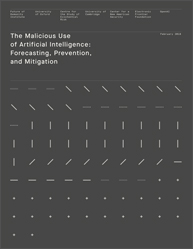BY Richard Summerfield
Targeted cyber attacks have doubled in the last year, according to Accenture Security’s latest ‘State of cyber resilience’ study.
The report, which surveyed 4600 executives from large organisations around the world, found that the volume of targeted attacks reached 232, up from 106 in Accenture’s 2017 report.
Ransomware and distributed denial of service (DDos) attacks in particular have been on the rise over the last 12 months. Though organisations are increasingly able to block attacks (87 percent of focused attacks were repelled last year, up from 70 percent in the 2017 report), 13 percent of focused attacks were able to penetrate defences.
Accordingly, organisations are still facing an average of 30 successful security breaches per year which cause damage or result in the loss of high-value assets, which is unsustainable in the long run.
“Only one in eight focused cyber attacks are getting through versus one in three last year, indicating that organisations are doing a better job of preventing data from being hacked, stolen or leaked,” said Kelly Bissell, managing director of Accenture Security.
“While the findings of this study demonstrate that organisations are performing better at mitigating the impact of cyber attacks, they still have more work to do. Building investment capacity for wise security investments must be a priority for those organisations who want to close the gap on successful attacks even further. For business leaders who continue to invest in and embrace new technologies, reaching a sustainable level of cyber resilience could become a reality for many organisations in the next two to three years. That’s an encouraging projection,” he added.
Companies are also getting better at detecting breaches when they do occur. On average, 89 percent of respondents said their internal security teams detected breaches within a month, compared to only 32 percent last year. This year, 55 percent of organisations took one week or less to detect a breach, up from 10 percent last year.
New technology, such as artificial intelligence, machine learning, user behaviour analytics and blockchain, have been helping companies to fight off cyber attacks. Eighty-three percent of respondents agreed that these new technologies are essential to protecting their organisations.
However, there is much more work to be done. Respondents said only two-thirds of their organisations are actively protected by their cyber security programme. This must improve; companies should be proactive in designing and deploying their threat defences.
Report: 2018 State of Cyber Resilience





